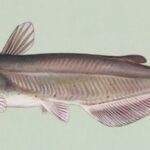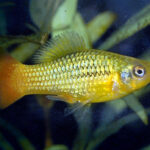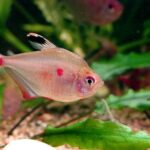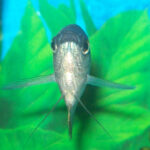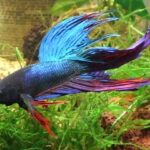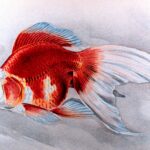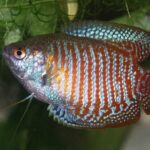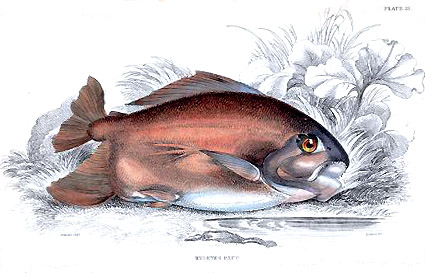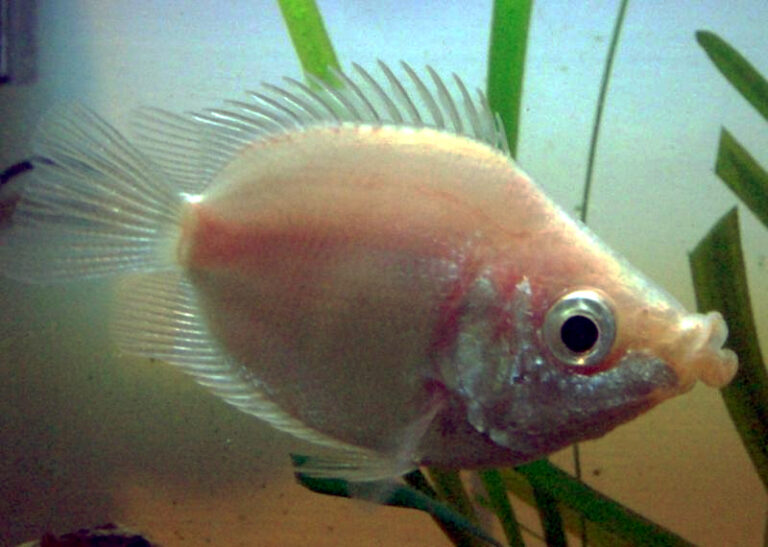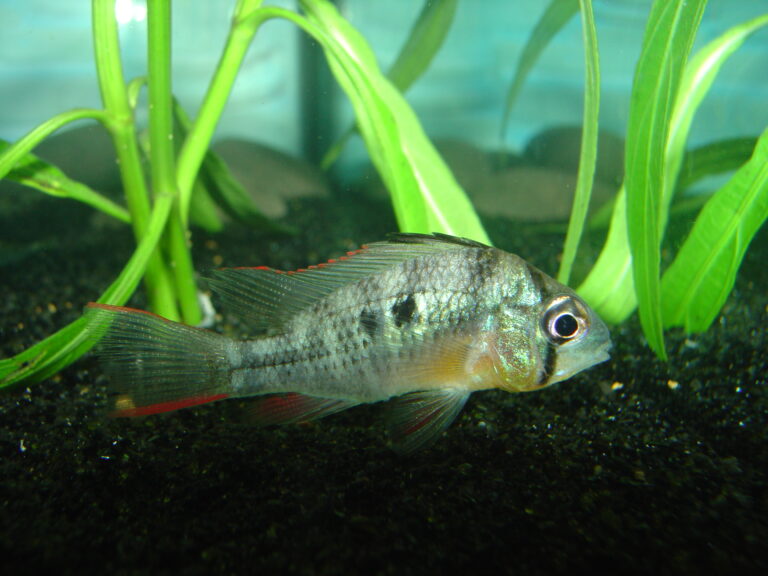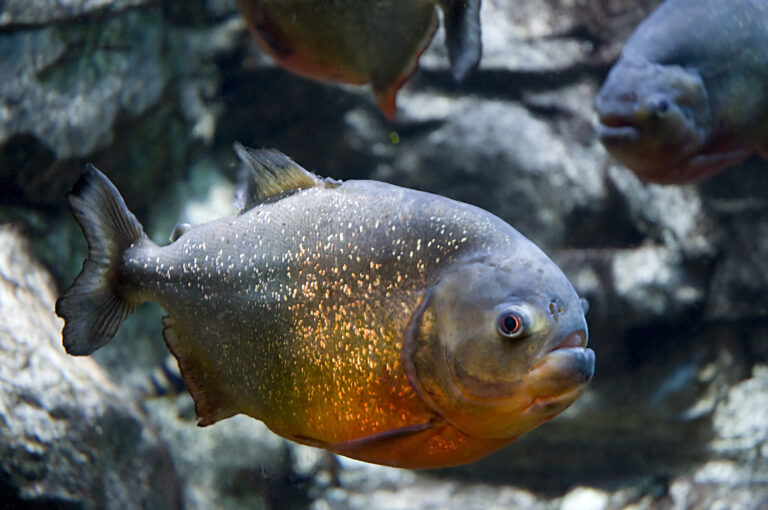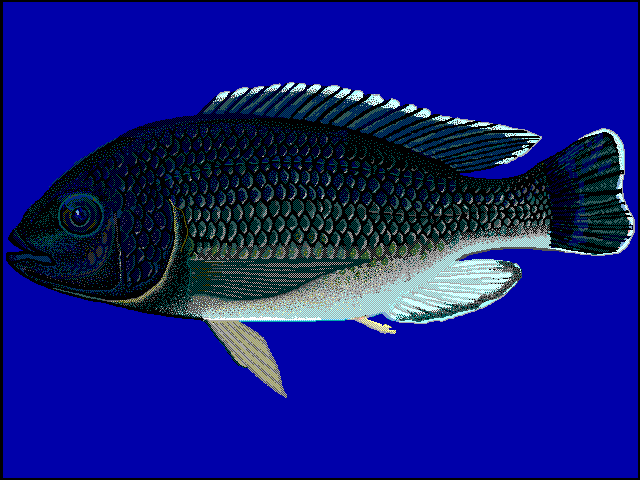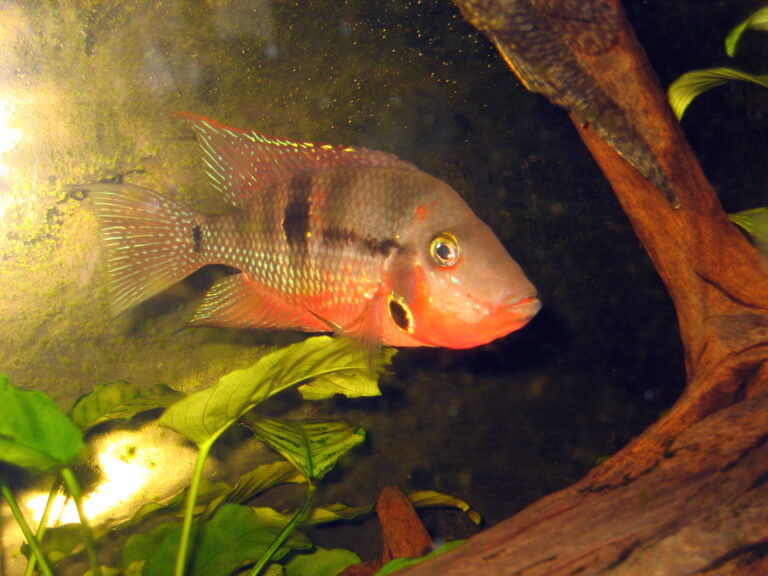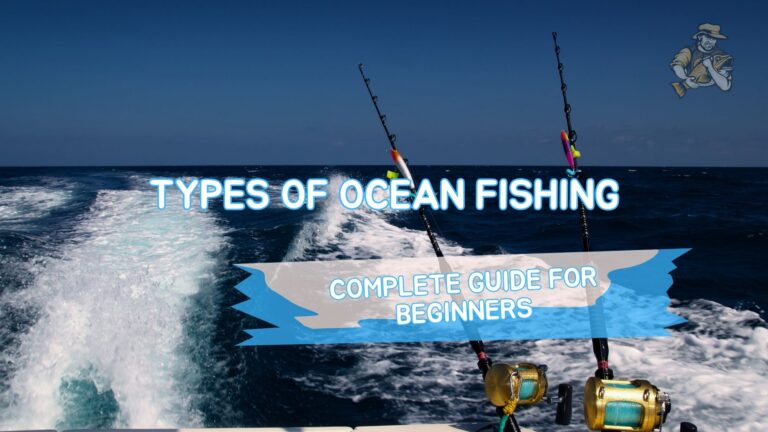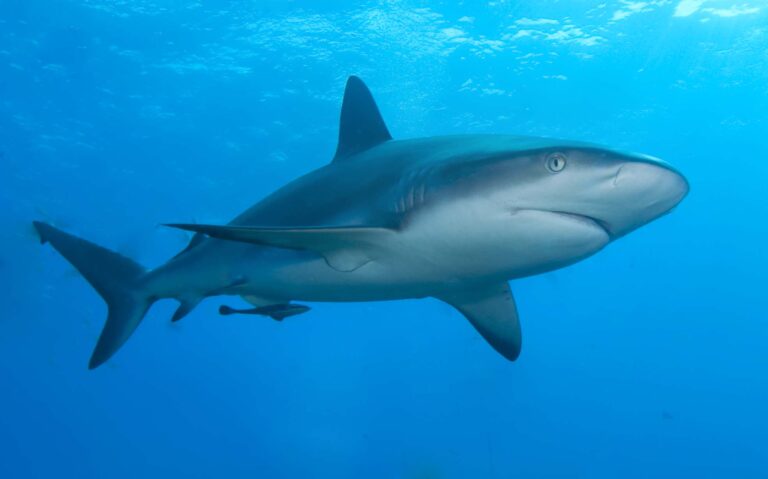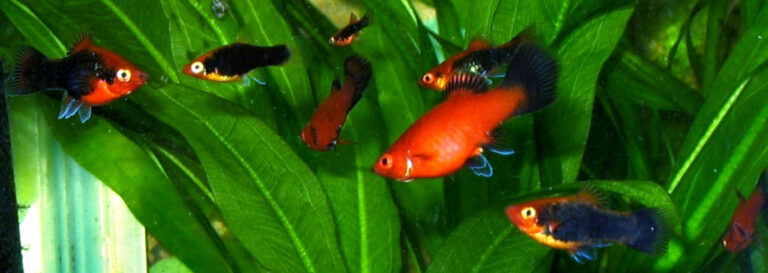Platy Fish
By Ryan Maron | Last Modified: June 4, 2025
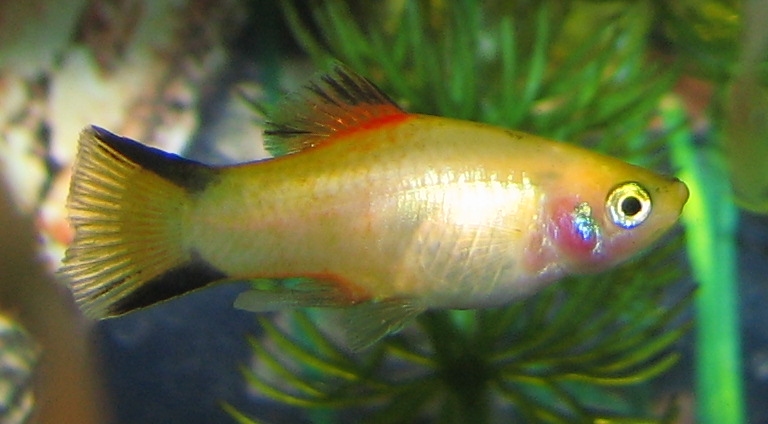
The Platy Fish, scientifically known as Xiphophorus maculatus, represents one of the most popular and widely distributed freshwater aquarium species in the world. These vibrant, peaceful fish belong to the family Poeciliidae and have played a crucial role in both the aquarium trade and scientific research for over a century. Native to Central America and southern Mexico, Platy Fish have become essential indicator species for freshwater ecosystem health while serving as model organisms in genetic and behavioral studies. Their remarkable adaptability to various water conditions and prolific breeding habits have made them cornerstone species in understanding livebearing fish reproduction and community tank dynamics.
| Feature | Details |
|---|---|
| Common Name | Platy Fish |
| Scientific Name | Xiphophorus maculatus |
| Family | Poeciliidae |
| Typical Size | 4-7 cm (1.5-2.75 inches), 3-8 grams |
| Habitat | Shallow freshwater streams and springs |
| Diet | Omnivorous – algae, insects, plant matter |
| Distribution | Central America, southern Mexico |
| Conservation Status | Least Concern |
Taxonomy & Classification
Platy Fish belong to the order Cyprinodontiformes, family Poeciliidae, and genus Xiphophorus. The species Xiphophorus maculatus was first described by Günther in 1866, with the genus name derived from Greek words meaning “sword-bearer,” referencing the extended caudal fin found in related swordtail species. Within the Poeciliidae family, Platy Fish share evolutionary lineage with guppies, mollies, and swordtails, all characterized by their livebearing reproductive strategy.
The genus Xiphophorus contains 28 recognized species, with X. maculatus being one of the most genetically diverse. Taxonomic studies have identified several subspecies and geographic variants, including the northern platy (X. m. maculatus) and southern platy (X. m. milleri). Modern molecular analysis has revealed significant genetic variation within populations, particularly in coloration genes that have made these fish valuable for genetic research.
The family Poeciliidae represents approximately 272 species across 40 genera, making it one of the most successful freshwater fish families. Platy Fish serve as a model species for understanding evolutionary relationships within this diverse group, particularly regarding the evolution of livebearing reproduction and sexual selection mechanisms.
Physical Description
Platy Fish exhibit remarkable sexual dimorphism and color variation, with adult females typically reaching 6-7 cm in length while males remain smaller at 4-5 cm. Females display a more robust, rounded body profile necessary for carrying developing fry, while males possess a streamlined appearance optimized for courtship behaviors. The species demonstrates one of the most extensive color polymorphisms found in freshwater fish, ranging from solid reds, yellows, and blues to complex spotted, striped, and mottled patterns.
The most distinctive feature of male Platy Fish is the gonopodium, a modified anal fin used for internal fertilization. This specialized reproductive organ measures approximately 8-12% of the male’s total body length and contains a complex arrangement of hooks, spines, and supportive structures. Female anal fins remain fan-shaped and unmodified, serving primarily for swimming stability and maneuvering in slow-moving waters.
Wild-type Platy Fish typically display cryptic coloration with olive-brown base tones and darker vertical banding patterns. However, selective breeding has produced numerous ornamental varieties including sunset platys (orange-red coloration), Mickey Mouse platys (distinctive black spot patterns), and hi-fin varieties with enlarged dorsal fins. The caudal fin shape varies from rounded in wild populations to elaborate sword-like extensions in some cultivated strains.
Anatomical features include a terminal mouth position suited for surface and mid-water feeding, relatively large eyes adapted for detecting movement and color changes, and a compressed body shape that facilitates rapid acceleration when escaping predators. Scales are cycloid and relatively large, providing protection while maintaining flexibility for the active swimming behavior characteristic of this species.
Habitat & Distribution
Native Platy Fish populations inhabit the freshwater systems of eastern and southeastern Mexico, extending through Guatemala, Belize, and northern Honduras. Their natural range encompasses the Atlantic slope drainages from the Río Pánuco system in Mexico southward to the Río Ulúa system in Honduras. These fish demonstrate remarkable adaptability to diverse freshwater environments, from spring-fed streams to larger river systems and associated wetlands.
Optimal Platy Fish habitat consists of shallow, slow-moving waters with temperatures ranging from 20-28°C and pH levels between 7.0-8.5. Natural habitats typically feature dense aquatic vegetation, fallen logs, and rocky substrates that provide shelter and foraging opportunities. Water depth preferences range from 0.3-2 meters, with highest population densities occurring in areas with moderate current flow and abundant plant cover.
Environmental parameters in native habitats include dissolved oxygen levels of 5-8 mg/L, moderate hardness (150-300 ppm), and seasonal temperature fluctuations that influence breeding cycles. The species shows particular affinity for areas with limestone geology, which provides the alkaline conditions and mineral content essential for optimal physiological function and reproduction.
Human introductions have established Platy Fish populations in non-native regions including parts of the United States, Australia, and various Caribbean islands. These introduced populations often occur in disturbed aquatic habitats such as drainage canals, ornamental ponds, and thermally altered water bodies. The USGS Nonindigenous Aquatic Species database tracks these establishments as potential ecological concerns.
Diet & Feeding Behavior
Platy Fish exhibit omnivorous feeding behavior with opportunistic foraging strategies that vary seasonally and by habitat type. Their diet composition includes algae (40-50%), aquatic invertebrates (30-35%), detritus (10-15%), and higher plant material (5-10%). Feeding activity peaks during dawn and dusk periods, corresponding with optimal light conditions for prey detection and reduced predation risk.
Primary food sources include filamentous algae, diatoms, small crustaceans, insect larvae, and organic detritus. Adults demonstrate selective feeding behavior, preferring protein-rich items during reproductive periods and increasing plant matter consumption during non-breeding seasons. Juvenile Platy Fish initially consume infusoria and microscopic organisms before transitioning to adult feeding patterns at approximately 4-6 weeks of age.
Foraging behavior involves systematic exploration of vegetation surfaces, substrate crevices, and water column areas up to the surface film. The species employs both visual and tactile feeding methods, using their sensitive barbels to locate buried prey items. Group foraging is common, with feeding aggregations forming around concentrated food sources such as algae blooms or invertebrate emergence sites.
Digestive adaptations include a relatively long intestinal tract suited for processing plant material and specialized pharyngeal teeth for processing various food types. Feeding frequency in natural conditions averages 6-8 feeding events per day, with individual meal sizes varying based on food availability and social competition within feeding groups.
Behavior & Adaptations
Platy Fish display complex social behaviors including schooling tendencies, dominance hierarchies, and cooperative anti-predator responses. Group sizes in natural populations typically range from 8-25 individuals, with larger aggregations forming during feeding or spawning periods. Social structure within groups shows size-based dominance patterns, with larger individuals gaining priority access to food resources and preferred habitat areas.
Swimming behavior adapts to habitat conditions, with burst swimming capabilities reaching speeds of 8-12 body lengths per second during predator avoidance responses. Normal cruising speed averages 1-2 body lengths per second, allowing efficient energy utilization during foraging activities. The species demonstrates remarkable maneuverability in dense vegetation, utilizing precise fin coordination for navigation through complex three-dimensional habitat structures.
Territorial behavior occurs primarily during breeding periods, with males establishing small defended areas around optimal spawning sites. Territory size averages 0.5-1.5 square meters and includes essential resources such as shelter, feeding areas, and courtship sites. Inter-male aggression remains relatively low compared to other Poeciliidae species, consisting mainly of display behaviors and brief chasing episodes.
Adaptive responses to environmental stressors include behavioral thermoregulation, seeking deeper or shaded areas during temperature extremes, and modified activity patterns during periods of low dissolved oxygen. The species shows remarkable resilience to water quality fluctuations, with physiological adaptations allowing survival in conditions that would be lethal to many other freshwater fish species. Similar adaptability can be observed in other resilient species as detailed in our comprehensive guide to tetra fish types.
Reproduction & Life Cycle
Platy Fish employ a livebearing reproductive strategy with internal fertilization and a gestation period of 24-30 days depending on water temperature and female condition. Sexual maturity occurs at 3-4 months of age for females and 2-3 months for males, corresponding to body lengths of approximately 3.5-4.0 cm and 2.5-3.0 cm respectively. Reproductive capacity remains high throughout their 2-3 year lifespan, with females capable of producing 6-8 broods annually.
Courtship behavior involves elaborate male displays including fin spreading, color intensification, and ritualized swimming patterns around receptive females. Males utilize their gonopodium to transfer sperm packets (spermatophores) to females during brief mating encounters lasting 2-5 seconds. Females can store viable sperm for up to 6 months, allowing multiple broods from a single mating event through a process called superfetation.
Brood sizes range from 20-80 fry depending on female size and environmental conditions, with larger females producing significantly more offspring. Fry measure 6-8 mm at birth and demonstrate immediate swimming ability and feeding behavior. Parental care is limited, with adults showing minimal protection of offspring and occasional cannibalistic behavior toward smaller fry.
Juvenile development progresses through distinct growth phases, with sex determination occurring during early development stages. Growth rates average 0.8-1.2 mm per week under optimal conditions, influenced by temperature, food availability, and population density. Reproductive success varies seasonally, with peak breeding activity occurring during warmer months when food resources are most abundant. Research conducted by NCBI studies on Xiphophorus reproduction has provided valuable insights into livebearing fish reproductive biology.
Predators & Threats
Natural predators of Platy Fish include larger fish species such as cichlids, catfish, and gar, as well as aquatic birds, reptiles, and amphibians. Predation pressure varies by life stage, with fry and juveniles experiencing significantly higher mortality rates (60-80%) compared to adults (20-30% annually). Anti-predator adaptations include schooling behavior, cryptic coloration, and rapid escape responses that allow survival in predator-rich environments.
Primary threats to wild populations include habitat degradation from agricultural runoff, urban development, and water extraction for human use. Pollution from pesticides, fertilizers, and industrial chemicals poses significant challenges to population stability, particularly in areas with intensive agriculture. Water quality degradation affects reproduction success, juvenile survival, and overall population resilience to environmental stressors.
Introduced species represent emerging threats in some regions, with non-native predators and competitors altering ecosystem dynamics. Climate change impacts include temperature fluctuations beyond optimal ranges, altered precipitation patterns affecting water levels, and increased frequency of extreme weather events. These environmental changes can disrupt breeding cycles, reduce food availability, and increase physiological stress.
Human activities directly impact Platy Fish populations through aquarium trade collection, although most commercial specimens are now captive-bred. Habitat modification for flood control, dam construction, and water diversions fragments populations and reduces genetic diversity. Conservation efforts focus on habitat protection and restoration, water quality improvement, and regulation of collection activities in sensitive areas.
Conservation Status
The International Union for Conservation of Nature (IUCN) currently classifies Platy Fish as Least Concern due to their wide distribution, stable populations, and successful breeding programs. However, some isolated populations face localized threats that warrant monitoring and potential conservation intervention. The species’ adaptability and prolific reproductive capacity provide resilience against moderate environmental pressures.
Population trends vary by geographic region, with some Mexican populations showing declines due to habitat degradation while others remain stable or increasing. Genetic diversity studies indicate that captive breeding programs maintain substantial genetic variation, although some rare color morphs and geographic variants may be underrepresented in conservation efforts. The IUCN Red List assessment for Xiphophorus maculatus provides detailed population status information.
Conservation strategies include habitat protection through establishment of protected areas, water quality monitoring and improvement programs, and regulation of aquarium trade collection. Research programs focus on population genetics, habitat requirements, and ecosystem relationships to inform management decisions. Collaboration between government agencies, academic institutions, and aquarium hobbyists supports both wild population conservation and sustainable captive breeding.
Future conservation challenges include climate change adaptation, invasive species management, and balancing human water needs with aquatic ecosystem health. Long-term monitoring programs track population trends, genetic diversity, and habitat quality to detect early warning signs of population decline. Education and outreach efforts promote responsible aquarium keeping and support for freshwater habitat conservation among the general public.
Human Interaction
Platy Fish rank among the most popular aquarium species worldwide, with millions of specimens traded annually through commercial aquaculture operations. The global aquarium trade has created numerous ornamental varieties through selective breeding programs dating back to the early 1900s. Modern aquaculture facilities produce over 100 distinct color and fin varieties, supporting a multi-million dollar industry while reducing pressure on wild populations.
Scientific research utilizing Platy Fish has contributed significantly to understanding genetics, cancer research, and evolutionary biology. The species serves as a model organism for studying melanoma development, genetic inheritance patterns, and behavioral ecology. Research institutions maintain specialized breeding colonies for scientific purposes, with strict protocols to preserve genetic integrity and prevent contamination of research lines.
Educational applications include use in classroom settings for teaching genetics, reproduction, and aquatic ecology concepts. Their hardy nature, observable behaviors, and rapid reproduction make them ideal for student research projects and biological demonstrations. Many universities and schools maintain Platy Fish colonies specifically for educational purposes, following educational guidelines for live animal use.
Environmental management applications include use as indicator species for water quality assessment and ecosystem health monitoring. Their sensitivity to certain pollutants and rapid response to environmental changes make them valuable tools for detecting aquatic habitat degradation. Some regions employ Platy Fish in biological control programs, utilizing their algae-eating behavior to manage nuisance plant growth in constructed wetlands and stormwater treatment facilities. For those interested in maintaining these fish, understanding proper basic fishing techniques can provide valuable insights into aquatic ecosystem management.
Interesting Facts
Platy Fish possess the remarkable ability to change their behavioral patterns based on social hierarchies, with subordinate individuals adopting different feeding strategies and habitat preferences to reduce competition. Males can rapidly alter their coloration intensity during courtship displays, with some individuals capable of increasing color saturation by up to 40% within seconds through specialized chromatophore control.
The species demonstrates exceptional genetic diversity, with over 100 distinct genetic markers identified for coloration alone. This genetic complexity has made Platy Fish instrumental in advancing understanding of genetic inheritance patterns, with some research lines maintained continuously for over 80 years. Wild populations show remarkable local adaptation, with distinct genetic lineages adapted to specific environmental conditions such as high-altitude springs or sulfur-rich water sources.
Temperature perception in Platy Fish extends beyond simple thermal detection, with evidence suggesting they can distinguish temperature differences as small as 0.5°C. This sensitivity allows precise behavioral thermoregulation and optimal positioning within thermal gradients found in natural habitats. Research has also revealed that females can selectively utilize stored sperm from different males, actively choosing genetic contributions to offspring based on environmental conditions at the time of birth.
Platy Fish exhibit surprising problem-solving abilities, including spatial memory for food source locations and recognition of individual tankmates. Some populations demonstrate cultural learning, with foraging techniques and predator recognition behaviors transmitted between generations through observation and imitation. These cognitive capabilities rival those found in much larger and more complex fish species, challenging assumptions about intelligence in small freshwater fish.
Frequently Asked Questions
How long do Platy Fish typically live in captivity versus wild conditions?
Platy Fish generally live 2-3 years in both captivity and wild conditions, though optimal aquarium conditions can sometimes extend lifespan to 4 years. Factors affecting longevity include water quality, diet variety, stress levels, and genetic background. Wild populations face additional mortality pressures from predation and environmental fluctuations that may reduce average lifespan compared to well-maintained aquarium populations.
Can Platy Fish survive in outdoor ponds year-round in temperate climates?
Platy Fish cannot survive freezing temperatures and require water temperatures above 18°C for normal physiological function. In temperate climates, they can thrive in outdoor ponds during summer months but must be relocated to heated indoor facilities before winter. Some populations have established in warm-water discharge areas and geothermal springs in otherwise temperate regions, but these represent exceptional circumstances rather than normal cold tolerance.
What makes Platy Fish particularly valuable for genetic research compared to other aquarium species?
Platy Fish offer unique advantages for genetic research including their extensive natural color polymorphisms, well-documented inheritance patterns, short generation times, and established laboratory breeding lines. Their susceptibility to melanoma makes them invaluable for cancer research, while their livebearing reproduction allows real-time observation of developmental processes. The species’ genetic stability and ease of maintaining research colonies have made them standard model organisms in numerous scientific institutions worldwide.
Conclusion
Platy Fish represent a remarkable success story in both natural aquatic ecosystems and human-managed environments, serving dual roles as important components of Central American freshwater communities and beloved aquarium inhabitants worldwide. Their adaptability, prolific reproduction, and genetic diversity have made them invaluable for scientific research while their peaceful nature and vibrant colors continue to delight aquarium enthusiasts. As we advance our understanding of freshwater ecosystem conservation and genetic research applications, Platy Fish will undoubtedly remain essential contributors to both scientific knowledge and aquatic biodiversity preservation efforts.
Share The Article:
More Fish Species:
-
Pacu Fish
Pacu fish represent one of South America’s most ecologically significant freshwater species, encompassing several closely related members of the…
-
Kissing Gourami
The Kissing Gourami (*Helostoma temminckii*) stands as one of the most distinctive and recognizable freshwater fish species in both…
-
Bolivian Ram
The Bolivian Ram (Mikrogeophagus altispinosus) stands as one of South America’s most captivating cichlid species, representing a prime example…
-
Red Belly Piranha
The Red Belly Piranha (*Pygocentrus nattereri*) stands as one of South America’s most misunderstood freshwater predators, wielding razor-sharp teeth…
-
Cichlid
Cichlids represent one of the most diverse and fascinating families of freshwater fish, encompassing over 1,700 species distributed across…
-
Firemouth Cichlid
The Firemouth Cichlid (*Thorichthys meeki*) stands as one of Central America’s most recognizable freshwater fish species, distinguished by its…
Discover
-
Bass Fishing Techniques: Expert Tips That Actually Work
Bass fishing has been my passion for over three decades, and if there’s one thing I’ve learned, it’s that…
-
Types of Ocean Fishing: Complete Guide for Beginners
There’s something magical about standing at the edge of the vast ocean with a fishing rod in hand. I’ve…
-
Pelagic Thresher Shark
The Pelagic Thresher Shark stands as one of the ocean’s most distinctive and efficient predators, renowned for its dramatically…
-
Best Time to Go Fishing: Timing Tips for Bigger Catches
If there’s one question I get asked more than any other, it’s about timing. When should you cast that…
-
15 Panfish Fishing Secrets: Easy Catches for Beginners & Pros
You know what’s funny about panfish? These little fighters have probably hooked more new anglers than any other species,…
-
Caribbean Reef Shark
The Caribbean Reef Shark (*Carcharhinus perezi*) stands as one of the most recognizable and ecologically significant predators patrolling the…
Discover
-
Caribbean Inshore Fishing: Bonefish and Permit Tactics
There’s something almost magical about stalking the shallow flats of the Caribbean. I still remember my first bonefish –…
-
Betta Fish
The Betta Fish, scientifically known as Betta splendens, is one of the most visually captivating and widely recognized freshwater…
-
Alaska Salmon Fishing: Planning Your Trip to the Last Frontier
I still remember the first time I hooked into a Kenai River king salmon. It was July 15, 2019,…
-
Tuxedo Platy
The Tuxedo Platy (Xiphophorus maculatus) stands as one of the most recognizable and beloved freshwater aquarium fish species, distinguished…
-
Beluga Fishing: Techniques That Actually Work (Not Theory)
When it comes to beluga fishing, there’s a world of difference between what you read in theory and what…
-
Unlock Killer Saltwater Jigging Techniques: What I’ve Learned After Thousands of Drops
The first time I tried saltwater jigging, I was on my buddy Dave’s boat in the Gulf of Mexico…

